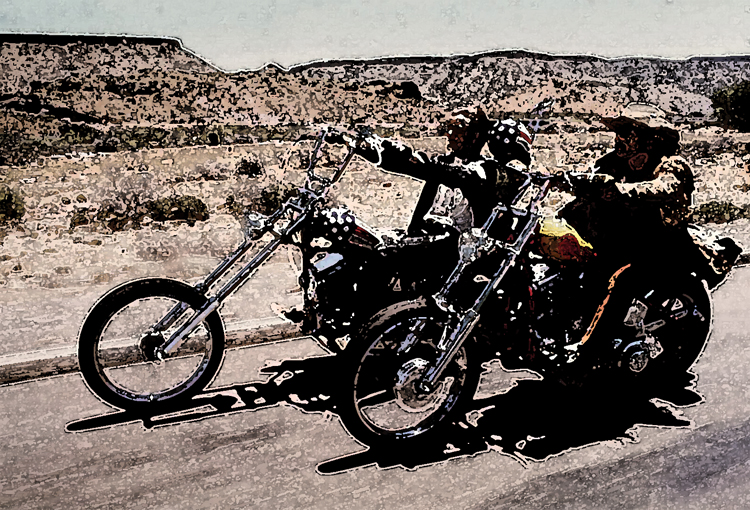The reason we ride bicycles is different for each cyclist. There is something universal among all cyclists. Bicycles represent freedom.
The modern bicycle, the design of which has not significantly changed in over a hundred and forty years, symbolizes the same thing it did in the 1880s. The freedom to travel. This freedom to travel was accentuated by the fact that your engine of travel was totally reliant on your own energy output.
There was no hitching up of horses or getting on a steam train. You proceeded directly from your residence to wherever you wanted to go. To make this easier, bicycle manufacturers organized and lobbied for better roads, which, literally paved the way for the automobile. You could say walking was also freedom, but it was a freedom limited to how far you wanted to go and how much you had to take with you. Cycling, on the other hand, greatly expanded how far you could go in a day or even an afternoon. The great advantage to cycling was its efficiency. In fact, in terms of energy consumed for distance traveled, it is the most efficient way of travelling invented.

To children of many generations, the acquisition of a bicycle was their first taste of freedom, as their world expanded by leaps and bounds. My first trips to Claireville Conservation Area, Eldorado Park and Toronto International Airport were the epic adventures of my youth. Always enjoyed with at least one friend, if not a group of friends.
In my mid twenties, my perspective of the freedom that cycling provided took on a new perspective with my exposure to a motorcycle enthusiasts magazine called “Easyriders”. I believe the inspiration for the magazine came from the movie “Easy Rider” released in 1969. The plot of this movie followed the two lead characters experiencing the adventure of riding across part of the United States on custom choppers. Songs from the soundtrack, like Steppenwolf’s “Born to Be Wild” reinforced this theme that living your life to the fullest happens on the open road.
In the magazine “Easyriders”, besides stories about custom built motorcycles, which were usually Harley Davidson derived, and the obligatory picture almost always was draped with scantily clad model, but they were really selling something else. They were selling a counterculture that revolved around the freedom of a type of travel. In America, this freedom dated back to a romanticized depiction of the wandering cowboy of the nineteenth century, that was portrayed in many Hollywood movies and also in travelling old west rodeos. This continued in American pop culture and still exists today. In 1986, Jon Bon Jovi sang “I’m a cowboy. On a steel horse I ride”.
Of course, I did not really identify with the outlaw or one percenter aspect of what this biker culture was espousing. I did identify with the sub-culture aspect, where I realized that what I was doing, although accepted, was not practiced by a large cross-section of the population. However, this was actually part of the attraction for me. The fact that if you came across another cyclist, on a country road, you would give them a knowing wave and smile, as you were both part of a fraternity. In an era before the advent of cell phones, the unwritten rule was that if you saw a fellow cyclist with a mechanical or other problem by the side of the road, you would stop and offer assistance. I still follow this rule.
The mindset that left an impression on me, from the pages of “Easy Riders” was that those of us who that travelled on two wheels in the open air, were experiencing something more. A more honest type of travel. To highlight this, the motorcycle aficionados coined the term “cagers”, which was applied to anyone who travelled by car. The term had obvious intonation that car drivers were not really experiencing the freedom of the road since they were cocooned in a cage-like structure and hence, were unable to appreciate the same sights, smells and wind-in-your face as the motorcyclists did.
I took this thinking to heart and realized that traveling on a bicycle one-upped the motorcyclist’s experience by adding the additional sensation of travelling noiselessly. You can hear the environment you are travelling through.
The concept of the freedom of cycling has never been more pertinent than now, during a pandemic. It is not only an escape, but it brings a sense of normalcy back to your day. The requirements are so simple. All that is needed is a bicycle and a road or path. As previously mentioned, the fact that you are out of a “cage” and experiencing the sights, sounds and smells of your environment makes you feel more alive, and hopefully, at the end of the ride, rejuvenated and serene.

photo credit: Dayle Laing, 2016 – image of Peter Bolton at Greg’s Ride, Milton
There were other stories to come out of this cycling adventure, but they are for another time.
Other Stories by Steve Stoller


You must be logged in to post a comment.